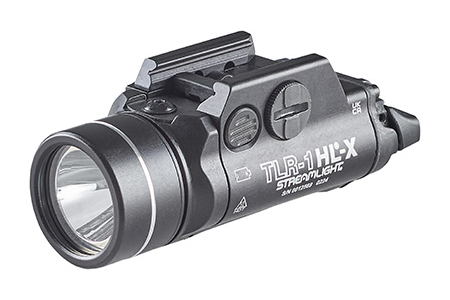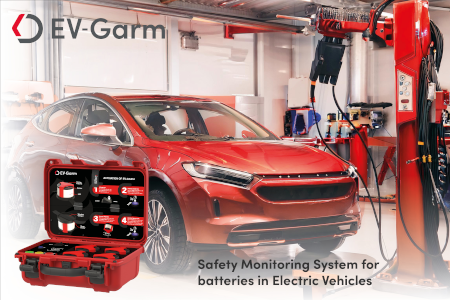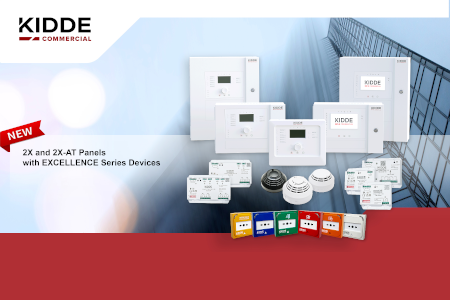 By Ian Dunbar, Rescue consultant at Holmatro Rescue Equipment
By Ian Dunbar, Rescue consultant at Holmatro Rescue Equipment
So as far back as half a million years ago we were capable of designing a tool that was for a specific purpose. It was the right size, shape and weight and was even made with safety in mind. Also, it was quite obviously made to last.
Today, whilst the mechanics of how we design, make and use tools has changed, the basic concepts obviously have not and the best tools are designed with its specific purpose AND the user in mind.
If we look at how the rescue process has changed over the last thirty years, it is easy to understand why rescue tools evolved so rapidly. This is due to technological advancements in vehicle construction and also due to our understanding of the needs of the casualty inside the vehicle and the subsequent need to focus on them.
As rescuers we need to make sure we have two well stocked tool boxes so that we are fully prepared for rescue. These tool boxes must include the following types of tools:
Physical tools (hydraulics and assist tools)
Mental tools (your knowledge and experience)
Physical tools
The tools you choose make a huge difference to how you perform, and more importantly the outcome of the rescue. New car technology has in theory added more risk to the rescue scene and as a consequence made extrication more technically challenging, sometimes adding to our time on scene. We need to recoup this time by choosing the right tools which allow us to work more quickly and efficiently whilst still maintaining safety, the most important element of any rescue.
We should accept that the most successful rescues are:
Safe, for all on scene including technical and medical personnel, victims and members of the public
Efficient, reducing time on scene in line with the Golden Hour, • promoting simultaneous activity and ensuring a twenty minute extrication process
Casualty centred, allowing continuous quality care of the • victim throughout the whole rescue with no need for the physical extrication to cease
Safety
When we think about safety on scene we have to consider many factors, but let’s look at how your tools make for a safer environment. Firstly personal safety in terms of manual handling; your tools should be as light as possible, ergonomic and well balanced. This will greatly reduce the physical burden on rescuers. Your pumps and hose should be low in weight, and light enough for one person to carry (as this is always safer than two persons carrying equipment).
Single hoses with rotating couplings mean that management of lines on scene is easier and therefore safer as there are no resulting loops causing a hazard.
Low noise pumps sited away from the scene of operations means communication is easier and maintains a safer working environment.
Statistically most injuries at road traffic collisions take place after the extrication has taken place, so the easier your equipment is to make up and stow back on the rescue vehicle, then the greater degree of safety you have at the end of the incident. Single line hoses and light equipment make this possible.
Efficiency
Your tools can really reduce time on scene due to the efficient way they operate. Efficiency in rescue saves lives. This cannot be disputed, so the more efficient your tools, the greater chance your victim has of survival.
Single hoses and couplings (with auto lock) allow instant one handed tool swapping and means that the rescuer does not have to put the tool down on the floor in order to use two hands to make the coupling connection. This also means there is less chance of dirt entering the coupling, removing the necessity for cleaning, saving valuable time.
Tools fitted with speed valves mean that the tool works at higher speed at low pressures. Rams that can be manually extended before the use of hydraulics fill the gap far quicker and this allows any physical entrapment to be moved away from the victim far quicker.
Casualty centred
The tools you have in your hands WILL greatly affect how casualty care is delivered and will have a direct effect on the successful completion of your rescue.
If the noise from your tool is in the vicinity of your casualty, the medical personnel on scene will find it very difficult to effectively monitor vital signs such as breathing rate. Look at any reference to conducting a thorough primary and secondary survey and all state the importance of being able to look, LISTEN and feel, in order to monitor your victim. Reduction in noise on scene also makes communication between medical and technical staff more efficient, leading to a timelier rescue, which is of course the best for your casualty.
The ram mentioned above (manually adjustable) can mean that a physical entrapment is removed from your victim far quicker. If we look at a casualty trapped by the dashboard following a frontal impact, the time saved by such a ram is vital to restore effective chest movement and improve breathing efficiency.
Your mental tool box
Vehicle construction and safety systems have advanced greatly in the last two decades and this causes great concern to rescuers. However it is important to remember that rescue tools and rescuers have also advanced over the same time period. Rescuers are now far more aware of the issues that affect rescue and have more avenues of learning available to maintain and advance their knowledge.
With every training event or operational incident comes a new ‘tool’ you can commit to memory: Something you can recall in the future. Of course this doesn’t have to be something that went well or worked fine, but it should also be something you know not to be safe, efficient or casualty centred. This may sound like an obvious statement but it is important to emphasise the importance of committing your experiences to memory so they can be recalled at future incidents.
Extrication is a very personal process, and rescuers will always have their preferred methods. However, we simply cannot switch off to new concepts and ideas, as the most important set of tools any rescuer must possess is a large box of options.
The more options we have for performing a particular task (e.g. side removal) the more adaptable we are on scene, and the more effective rescuers we are. In my experience I have met a lot of rescuers who will simply disregard a technique because it is ‘something we don’t do here’ or ‘we would rather do it like this’. We have to remember that there is no right or wrong way to extricate as long as it is safe, efficient and casualty centred, and disregarding a technique will only limit your options in the future. Ultimately, limiting your options may mean that the only tools you have left in your mental tool box are not safe, efficient or casualty centred; this will greatly affect your ability to perform a successful rescue.
An example of this is that I was recently told by an instructor that he no longer teaches a B post rip technique, claiming that it is not effective on newer cars. While the effectiveness on new cars may be reduced, it still works fine on older vehicles and by not teaching this technique, he has immediately limited options on scene. Furthermore, the technique of ripping and extending a relief cut by spreading (as in a B post rip) is still a very valid technique which can be adapted on other parts of the vehicle.
Of course sharing knowledge is also vitally important, especially with less experienced personnel. I do believe that the more experience you have, the more responsibility you have to share that information.
Most of my knowledge has been gained from working closely with excellent people who have passed on their experiences to me. I cannot emphasise the importance of working with these kinds of people.
Another great source of learning is from operational debriefs following incidents. Providing these are well structured, every operational incident should provide valuable information that can be taken forward for the future so that rescue becomes more effective.
Conclusion
In half a million years, we have evolved massively as a species, but it’s great to see that some things have largely remained the same. I bet when that stone aged man carved his axe all those years ago, he didn’t think that in 2012 we would still have largely the same thought processes when it comes to designing, building and using tools. The best rescue tools are designed with the user in mind, allowing safe, optimal performance and ensuring that the victim is considered at all stages of the process. In addition to this, your mental tools need to be well developed and fit for purpose. That can only be achieved by being prepared; remembering what works well, and just as importantly, what doesn’t, and never closing your mind to any new concepts or ideas.
Ultimately though it’s about achieving the perfect balance between the two elements: Ensuring that the skills you have learned can be put to their most effective use by choosing and using the safest, most efficient and casualty centred tools available. Whether your tool is hydraulic, or in your head, it must be the right one.
About Ian Dunbar
Before joining Holmatro Ian was a Training Officer in the UK Fire & Rescue Service with a background in both technical as well as medical rescue. Ian provides Consultation & Training to emergency services departments around the world.











